6 Tips for Creating More Shareable Content (With Examples)
December 22, 2021 7 min read

There are lots of benefits to a well-planned content marketing strategy. Whether you’re after raising brand awareness, building authority, boosting organic traffic, or increasing conversion rates on your website, you’ll find that there are a few approaches that always work better than others.
For one, focusing your attention on quality instead of quantity might not get you overnight results, but it’s sure to support your business in all the ways that actually matter.
Secondly, by ensuring that you spend your time, energy, and money on content that excites your target audience, you’re more likely to create a loyal following that cares about your products and posts.
And, finally, by producing your content with shareability in mind, you’re setting your business up for success by making it natural for your audience to share the value of your posts (and thus champion your brand as the go-to in your niche).
So, if you’re ready to take your content marketing strategy to the next level by creating highly shareable posts, here are a few great tips on how to achieve the effect you’re after.
1. Consider the Word Count
One of the easiest ways to maximize the chances of having your blog posts shared is to pay attention to the word count.
Backlinko’s content study from 2019, which analyzed 912 million blog posts, found a strong correlation between post length and the number of social shares it stands to achieve.
Apparently, the sweet spot for maximizing social shares falls between 1,000 and 2,000 words, testifying that readers/consumers appreciate long-form content more than they do quick reads.
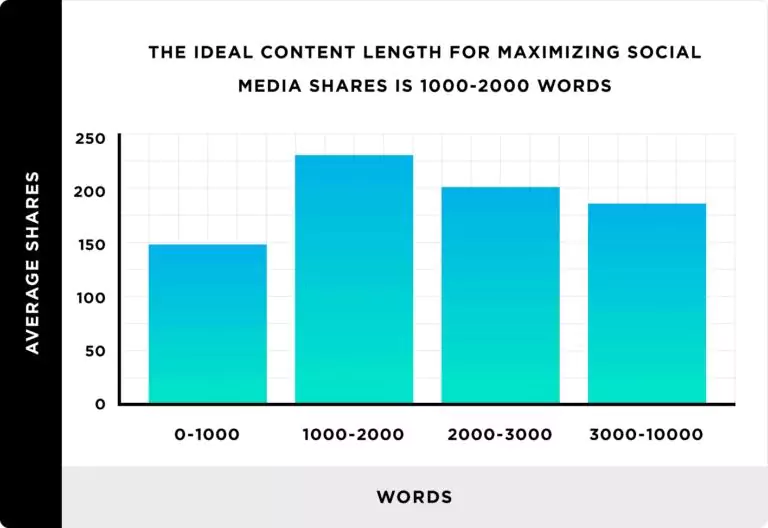
The likely reason for this is simply the fact that long-form allows you to squeeze more value into your posts, whether that value comes in the form of unique or new data, educational content, or entertainment.
2. Choose the Right Platform
Another super-easy hack for getting more shares out of your posts is to reconsider the distribution platforms you use.
Traditionally, businesses tend to focus their attention on Facebook, Instagram, and Twitter. However, internet user behavior data suggests that some of these might be a waste of your time when targeting specific audience segments.
For example, 2021 data from the PEW Research Center shows the vast difference between social networking platform use among different age groups. So, for example, those between the ages of 18-29 are far more likely to use Snapchat (65%), Instagram (71%), and YouTube (95%) than they are to log into Twitter (42%). On the other hand, among those above the age of 65, only 49% ever use YouTube.
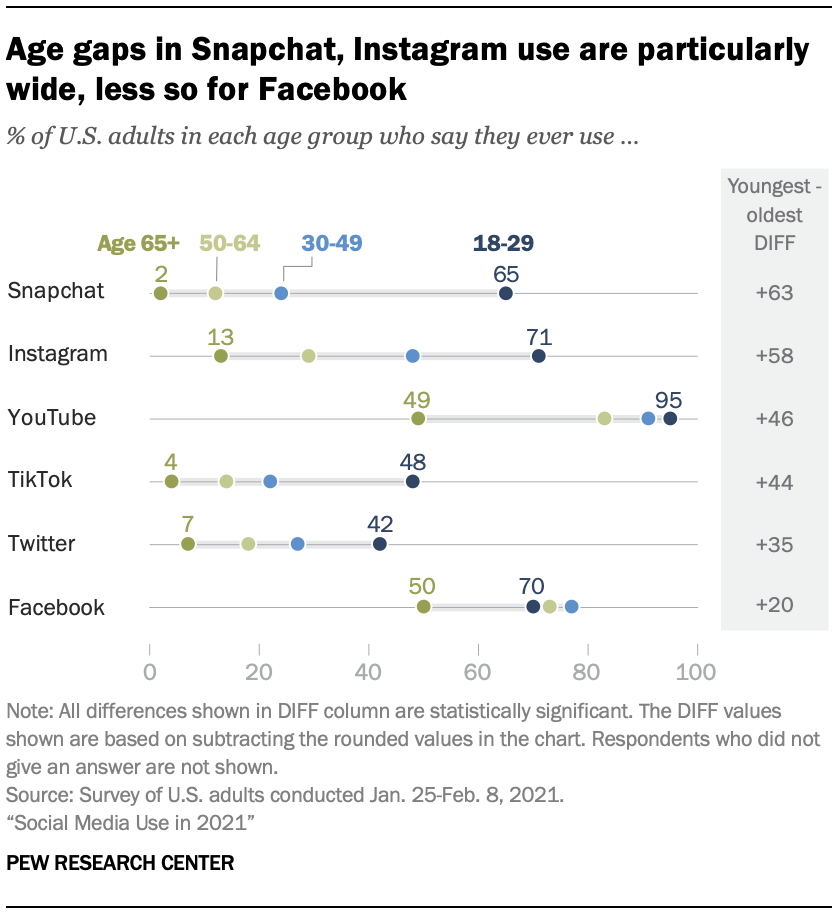
With all this in mind, your content marketing strategy must take demographics into consideration.
Get your distribution channels right, and you stand not just to widen your reach. Perhaps more importantly, you’ll be maximizing the chances of your content getting more shares, resulting in higher ROI and a quicker path towards your desired outcomes.
For a great example of a company whose content strategy varies throughout different distribution platforms, check out The North Face. You’ll quickly realize that this brand’s Instagram feed contains at least twice as much content (and a vastly more engaged following) than its Facebook profile.
3. Bring Something Unique to the Table
If you’re looking to get more shares (and more eyeballs) on your content, then it should go without saying that the articles, videos, podcasts, and visual content you produce have to be unique.
Don’t just do whatever your competition is doing. Find ways of taking things a step further. Perhaps you can provide your readers with an extra bit of info from your original research? Or, you might find it beneficial to help your followers consume your content in a way that suits them better than text?
It’s even possible that the key to making your content more shareable is to take a more committed approach to your voice, verging from the “salesy” tactic your competitors use.
For a great example of how easy it can be to make your content unique (and thus more likely to receive shares), check out the Instagram feed of supplements brand Transparent Labs.
By dedicating its videos section entirely to recipes and foods, the brand is stepping away from the notion that health nuts and fitness enthusiasts must sacrifice flavor to look and feel great. Instead, it’s giving them instructions on how to prepare delicious low-calorie meals that are mouth-watering, to say the least.
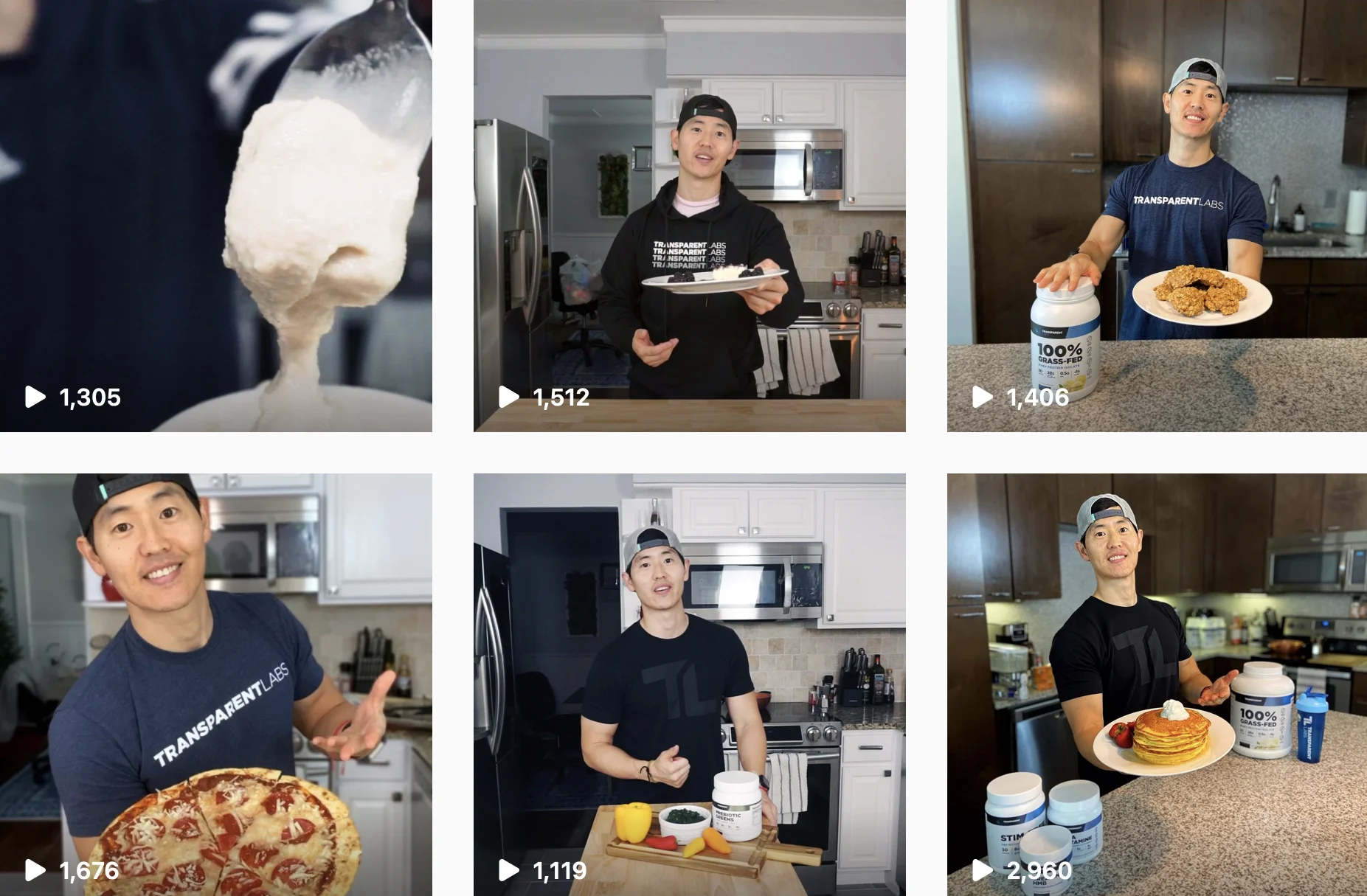
4. Make Your Content More Useful
If you don’t have the means to deliver unique or new info, you can still do a lot to make your content valuable to your followers and boost its chances of getting shares.
One great strategy is investing your resources in useful content. Whether that means producing educational posts – such as this guide to Amazon SEO from Aura – or instructional how-to articles, like this one on finding the cheapest flights, is entirely up to you.
But rest assured that you’re bound to see great results, both in reach and brand authority, when you invest your energy into writing content that helps people.
Plus, research shows that educational content has the power to boost sales by up to 131%, which is anything if not an impressive statistic.
5. Use Visuals
In 2015, BuzzSumo partnered with Canva to find out the extent to which visuals impacted social media shares. They found that the precise number of images in a post didn’t matter nearly as much as the ratio between pictures and words.
It turns out that the gold standard for maximizing shareability is to use an image every 75 to 100 words in your blog posts, which holds the potential of doubling the number of shares you get on social.
Combine this info with the fact that people who follow directions with illustrations have a 323% higher chance of success than those who only get access to text, and it becomes clear that adding visuals to your posts makes for a super-simple strategy for getting more shares out of your content.
So, the next time you sit down to write a blog post for your website, look for ways to enrich it with pictures and videos.
If you have the means to produce original photography for it, that’s great. But if you don’t, you can still use easily accessible assets like stock photos or screenshots that still get the message across, as proven by TimeTackle’s How to Guides blog section.

Looking for something with a bit more character than screenshots but aren’t good with a camera? Why not try adding some user-generated content to your posts (and your social media feed)?
It’s not just an excellent way to establish a recognizable visual identity for your brand, like that of GILI. Even more, UGC drives shares through forging a stronger relationship between you and your audience by moving away from the typical sales strategy and opting for an approach that builds excitement around the lifestyle your products and services support.
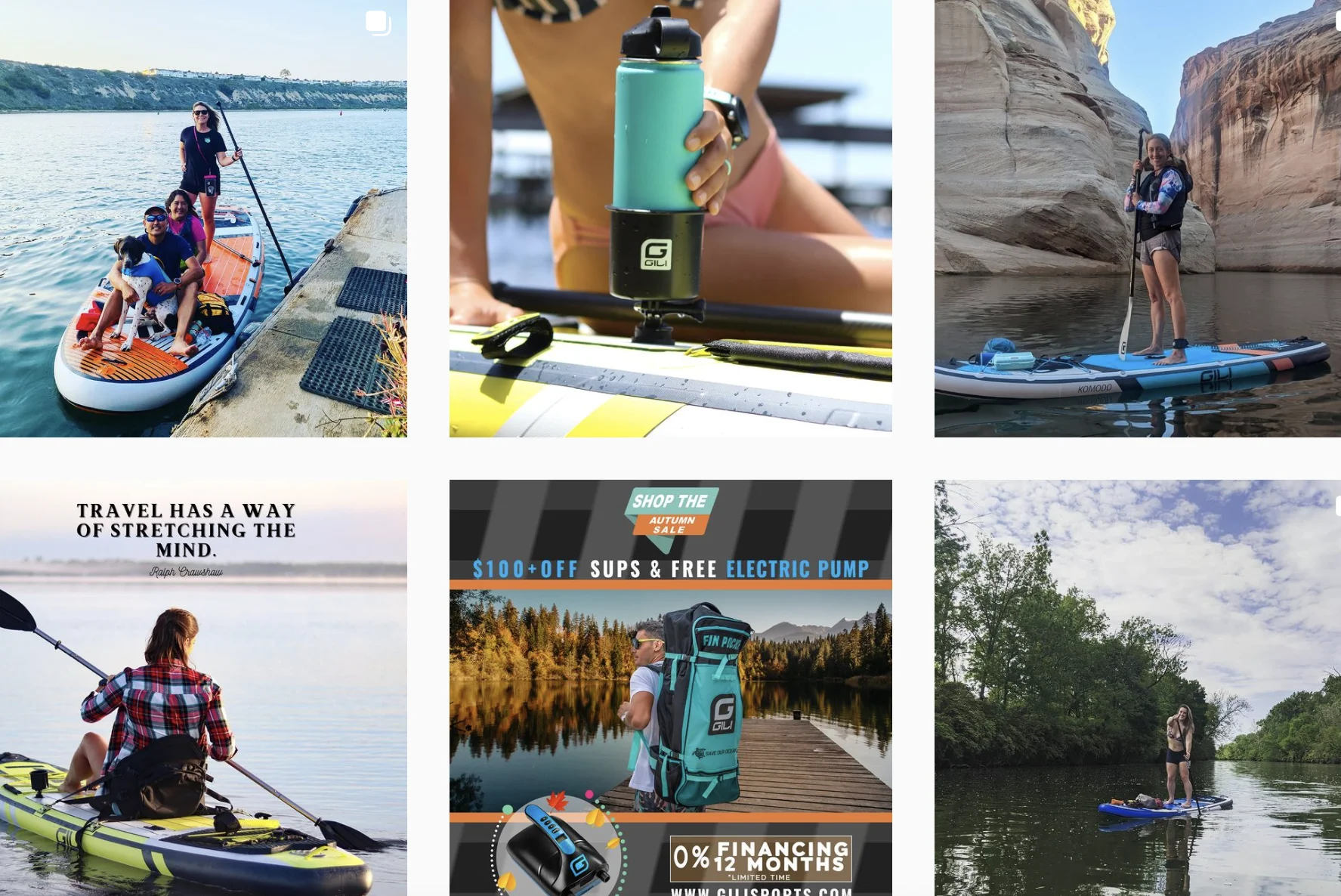
6. Don’t Forget the CTA
As you can see, there are plenty of tactics you can implement to create more shareable content for your site.
But as you look towards including more visuals, information, and value in your posts, don’t forget the most important element for encouraging your readers to pass your content forward: a prominent call to action that invites readers to share your articles with their network.
To get more shares, simply add a note at the end of your blog posts (or emails, or social media posts) inviting readers to forward the content to someone who may find it useful.
Or include prominent social share buttons on your website, as done on the Smiling Mind blog.
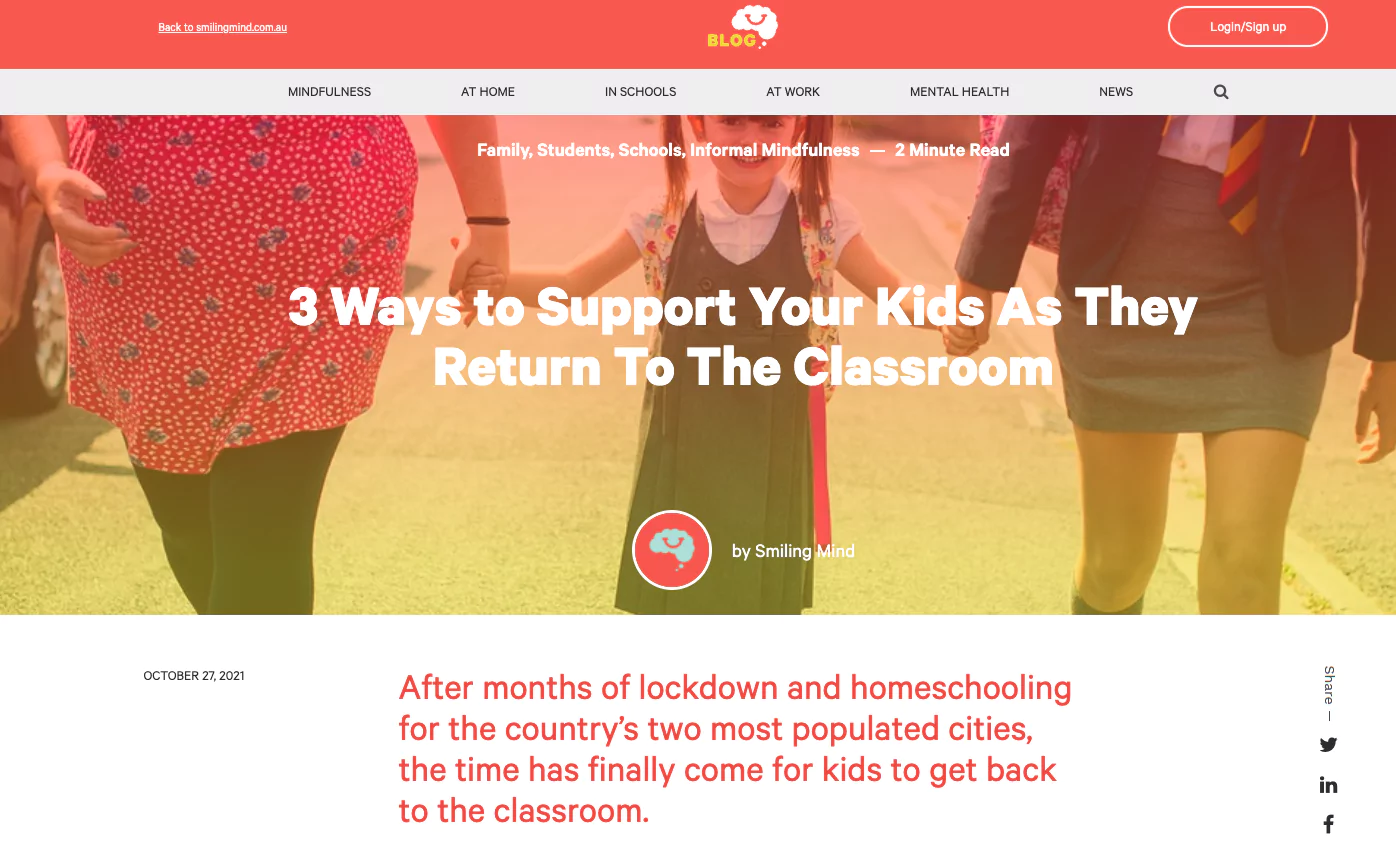
The six tips listed above increase the chance of maximizing your content’s reach, helping you achieve your marketing goals with ease (plus keeping your costs low). Develop a plan for implementing some of them (if not all) into your 2022 strategy, and you’re sure to see more shares, more engagement, and more brand awareness.
Author Bio
 Natasha has been working for and collaborating with individual clients and companies of all sizes for more than a decade. She specializes in writing about design, branding, digital marketing, and business growth. She is addicted to art in all its forms and grilled tofu.
Natasha has been working for and collaborating with individual clients and companies of all sizes for more than a decade. She specializes in writing about design, branding, digital marketing, and business growth. She is addicted to art in all its forms and grilled tofu.



